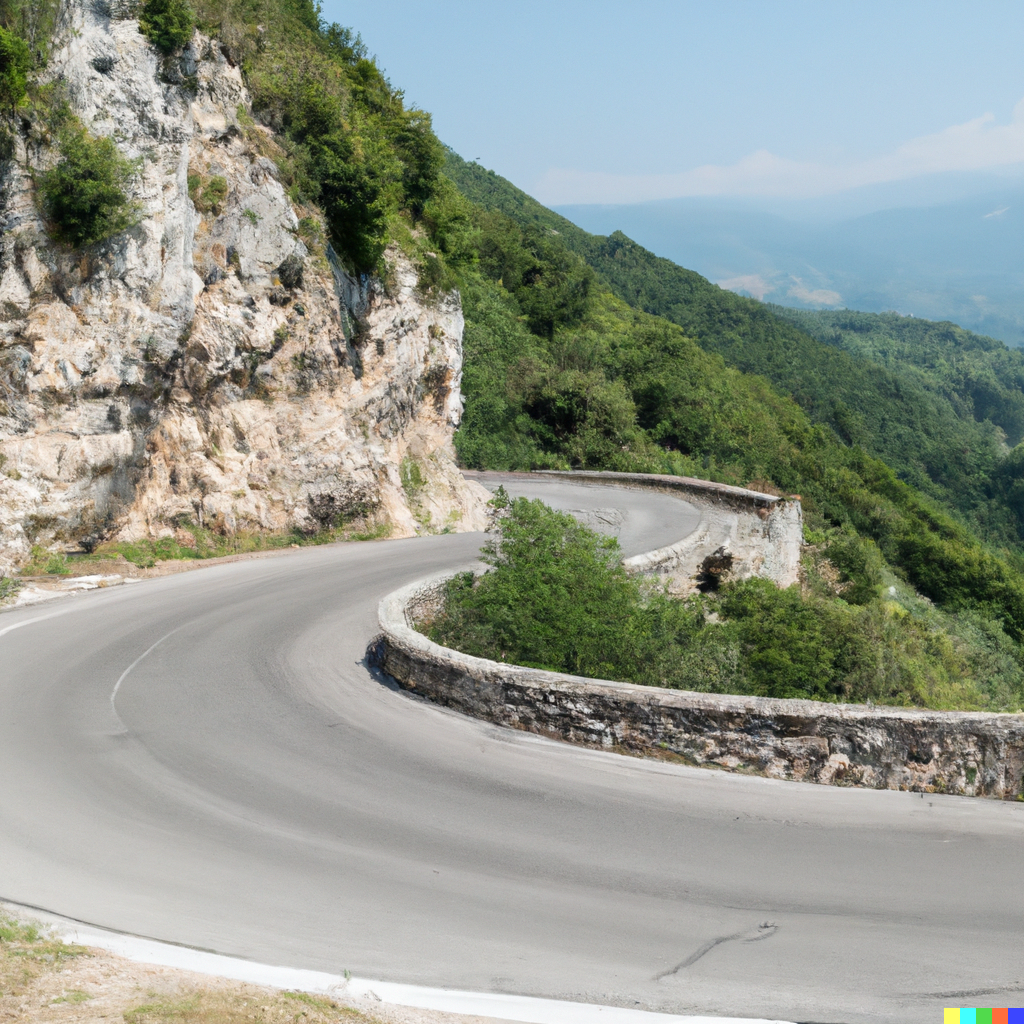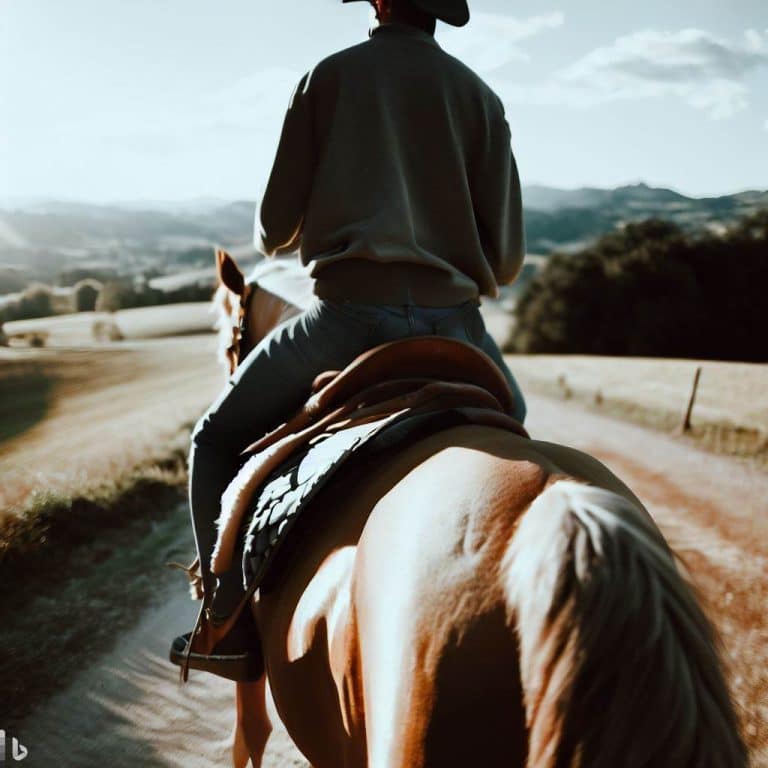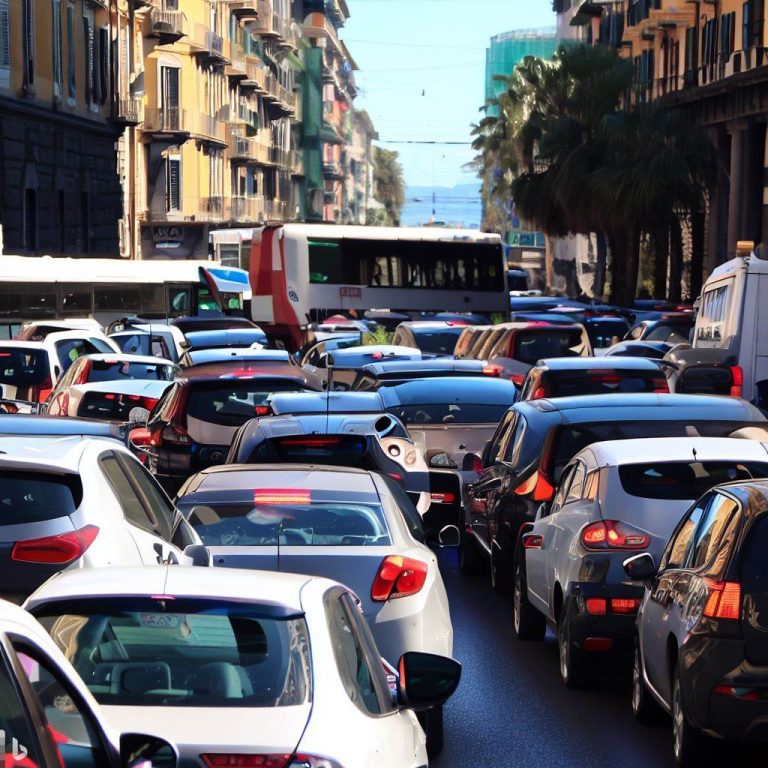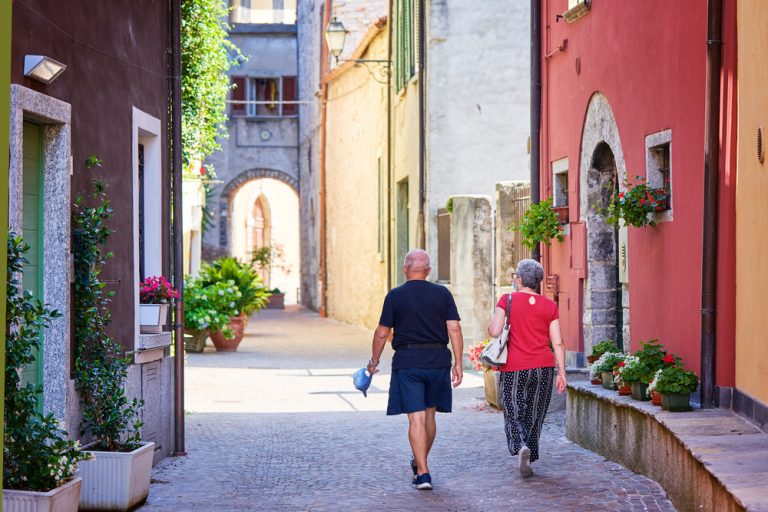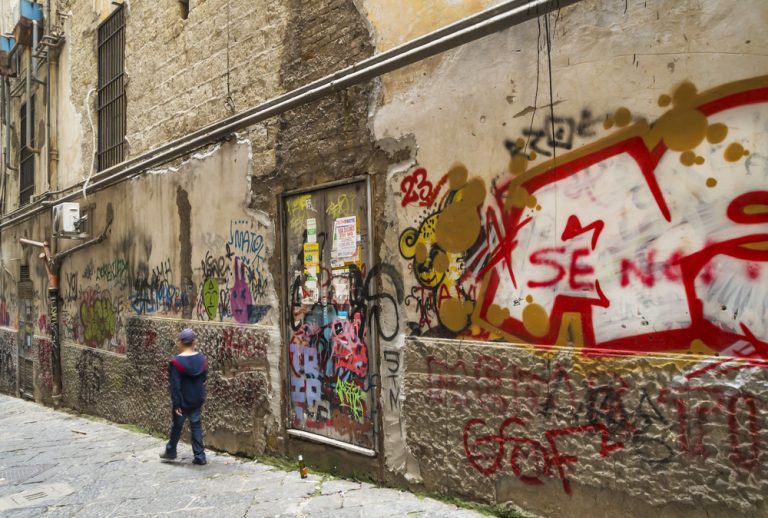Best Roadtrips in Italy: 10 Scenic Routes Off the Autostrada
Hello, fellow wanderers! I’m Erik, your guide to everything Italian, and today I’m going to take you on not one, but ten road trips through Italy’s picturesque countryside, historic cities, and stunning coastlines. Driving in Italy is more than just getting from point A to B; it’s an immersive experience that encompasses the cool mountain breezes of the Dolomites and the sun-drenched seascapes of the Amalfi coast. And the autostrada? That’s just the starting point!
The Italian autostrada, one of the world’s oldest highway systems, dates back to 1924, symbolizing almost a century of road-tripping tradition. Although the green sign with a white ‘A’ represents ‘autostrada,’ I like to think it stands for ‘amazing.’ Our adventure will not only focus on the road ahead but also on exploring quaint old towns, vine-covered valleys, and breathtaking landscapes off the autostrada.
So, let’s venture beyond the beaten path of the autostrada and explore the lesser-known Italian roads. Ready to shift gears and embark on this unforgettable journey?
Essential for Driving in Italy
Andiamo, my fellow road trippers! It’s time to dig into the real sauce – the nitty-gritty details that’ll transform you from a spaghetti-armed rookie to a seasoned Italian road warrior.
Priority from the right
First off, let’s talk about Italian driving laws and regulations. Ever heard of ‘priority from the right’? It’s a pretty common rule here. So, if you’re at an intersection without traffic signals, the vehicle from your right has the right of way. Remember, it’s not a race, it’s a journey!
Don’t drink and drive
When it comes to drinks and driving, Italy is stern. The legal blood alcohol limit is 0.05%. That’s about one glass of that tempting Chianti. So if you plan to explore Italy’s vineyards, designate a driver or find a nice nearby agriturismo to sleep it off.
Speed limits
Next, the speed limits: urban areas have a limit of 50km/h, non-urban roads are 90km/h, and expressways and autostrada? 110km/h and 130km/h respectively. But let’s be real – if you’re admiring the scenery, you’re probably not gunning it!
The ZTL
Beware of the Zona a Traffico Limitato (ZTL) or Limited Traffic Zones in many Italian cities – they are restricted areas where driving and parking is regulated, and unauthorized access can result in hefty fines.
Wear the seat belt
And the golden rule: always, always wear your seat belt! Even in the back. Trust me, you don’t want to cross paths with a vigilant Carabinieri over a missing seat belt.
In case of an acccident
Now, let’s touch on a more somber topic – accidents. Heaven forbid you find yourself in one, but it’s best to be prepared, si? In case of an accident, pull over if it’s safe, turn on your hazard lights, and call the European emergency number, 112. Take photos, exchange information with the other driver, and if someone’s hurt, don’t move them unless it’s necessary for safety.
Car Rental Tips in Italy
Alright, comrades, we’ve got the driving rules down pat. But hold on! Unless you’ve managed to smuggle your beloved automobile overseas, chances are, you’re going to need to rent a car.
Renting a car in Italy is pretty straightforward. Your first choice is the type of car. Most Italian cars are manual transmission, or as the Italians say, “cambio manuale”. So if you’re not familiar with the dance of the clutch and gear shift, make sure you specifically request for an automatic or “cambio automatico”. A word of warning – these tend to be pricier.
Next, fuel. Do you choose diesel (“diesel”) or petrol (“benzina”)? Diesel is usually cheaper in Italy and cars running on diesel generally consume less, making it a great choice for our scenic road trips. Just remember, filling up a diesel car with petrol is a recipe for a very unhappy engine (and an even unhappier wallet!)
Age can be a factor. Some rental companies require drivers to be over 21, some even 23, and usually with at least a year’s driving experience. So, youngsters, you might have to wait a few more years for this road trip adventure.
Insurance is not optional, it’s essential. Collision Damage Waiver (CDW) and Theft Protection are usually included in the rental cost. But, and this is a big but, there might be a large excess fee, so read the fine print or you might end up singing “O sole mio” in the rain.
A couple of trusty local rental companies you can check out are Auto Europe and Maggiore. But of course, international giants like Hertz and Europcar are always there as well.
Remember, in Italy, it’s “piano, piano” (slowly, slowly). Don’t rush, take your time to understand the rental terms. Your road trip should be “una passeggiata” (a walk in the park), not “un incubo” (a nightmare)!
First Scenic Route: The Amalfi Coast
If you’re looking to be charmed by Italy’s spectacular seaside landscapes, there’s no better place to start than the glamorous Amalfi Coast or “Costiera Amalfitana”. This journey will take you along State Road 163, a 50-kilometer stretch offering breathtaking cliffside views and ocean panoramas.
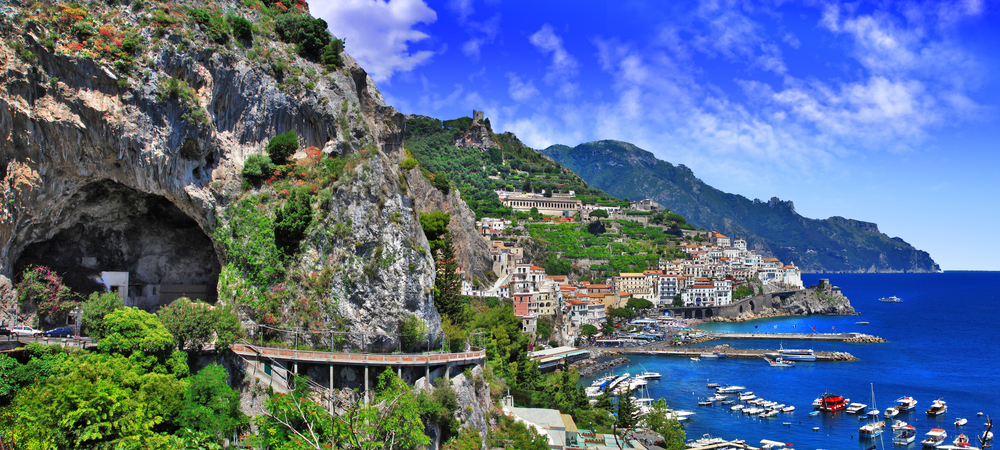
The Route: Your adventure begins in the bustling town of Sorrento, winds through the picturesque towns of Positano and Amalfi, and culminates in the tranquil heights of Ravello.
- Sorrento: Kick-start your journey in Sorrento by savoring its famed limoncello and catching a mesmerizing sunset. Hidden Secret: Look for Via Fuoro, an alley away from the touristy crowds, and discover the ancient Vallone dei Mulini, an abandoned mill tucked away in a gorge.
- Positano: Pose with Positano’s cascading houses that tumble down to the sea, creating a riot of colors. Hidden Secret: Escape the crowd and visit Fornillo Beach, a serene alternative to the main beach.
- Amalfi: Immerse yourself in Amalfi’s historical wonders by exploring the grand Cathedral of Saint Andrew and wandering its quaint streets. Hidden Secret: For a serene hike, follow the pathway from Amalfi to the ancient hillside town of Pontone – you’ll be rewarded with magnificent views.
- Ravello: For the best panoramic views, journey to the mountaintop town of Ravello. Visit Villa Rufolo and Villa Cimbrone for their stunning gardens. Hidden Secret: Experience a concert at Ravello’s annual summer music festival in the stunning open-air stage with the sea as its backdrop.
Local Cuisine: Savor the region’s seafood legacy with ‘Spaghetti alle vongole’ at Lo Guarracino in Positano. Hidden Secret: Visit Da Maria, a homely trattoria in Amalfi known only to locals, for an authentic Italian meal.
Offbeat Attraction: Venture to the less-visited Emerald Grotto, a natural cave bathed in a mesmerizing emerald light.
Best Time to Travel: Preferable times are spring (April-June) or fall (September-October) when temperatures are comfortable, and crowds are thinner.
Driving Tips: The road is narrow, winding, and perched on cliffs. Keep an eye out for the seasoned local drivers and buses.
Parking: Look for blue signs for pay-and-display parking. Remember the keyword “Parcheggi” – it’s Italian for parking.
Sustainable Travel Tip: Consider hopping on the SITA public buses. It’s more eco-friendly, plus everyone gets to enjoy the scenery!
Stay: Le Sirenuse in Positano offers luxury accommodation with “meraviglioso” (wonderful) bay views.
Nearby Excursion: Consider a day trip to the intriguing archaeological site of Pompeii or a ferry ride to the idyllic island of Capri.
Italian Phrase for the Journey: Embrace “Dolce far niente”, meaning “the sweetness of doing nothing”. Take it slow, soak in the scenery, and revel in the joy of simply being.
Emergency Contacts: Save 112 (the general emergency number in Italy) on your phone. Better safe than sorry!
Second Scenic Route: The Chianti Wine Route
Next on our Italian road trip adventure, we journey into the heart of Tuscany, cruising along the Chianti Wine Route, also known as “Chiantigiana Road” or SR 222. This scenic road runs south from Florence to Siena, encompassing about 70 kilometers of rolling Tuscan hills, medieval towns, and of course, vineyards as far as the eye can see.
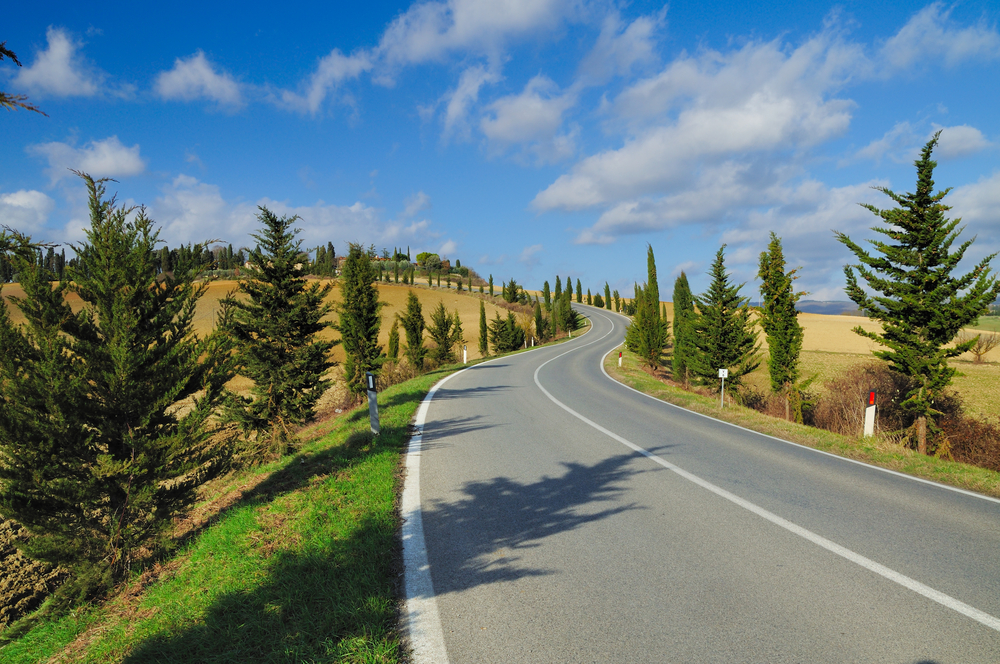
The Route: Start your Tuscan adventure in the Renaissance city of Florence, pass through the wine-loving towns of Greve and Panzano, and finish in the historic city of Siena.
- Florence: Embark on your journey in this Renaissance city, indulging in its rich art and architecture. Hidden Secret: Seek out the Vasari Corridor, an elevated enclosed passageway used by the Medici family that most tourists overlook.
- Greve in Chianti: Known as the ‘gateway to Chianti’, it’s famous for its triangular piazza and wine festivals. Hidden Secret: Don’t miss the chance to visit the less-known Montefioralle, a charming medieval village perched on a nearby hill.
- Panzano: A must-stop for every wine enthusiast, Panzano is home to world-renowned wineries. Hidden Secret: Take a detour to the organic winery of Fattoria Casaloste for a personalized wine-tasting session.
- Siena: End your journey in Siena, a city steeped in medieval charm. Hidden Secret: Find a quieter moment at the less-visited but spectacular Facciatone viewing platform, a part of the unfinished Siena cathedral expansion.
Local Cuisine: Enjoy a rustic Tuscan meal, and don’t miss the famous Bistecca alla Fiorentina (Florentine Steak). Hidden Secret: Dine at Osteria Le Panzanelle, a hidden gem offering authentic Tuscan dishes in Lucarelli, midway between Panzano and Radda.
Offbeat Attraction: Check out the Sculpture Park of Chianti, a harmonious blend of art and nature.
Best Time to Travel: To catch the grape harvest, visit in late September or early October. For milder weather and blooming landscapes, consider spring (April-June).
Driving Tips: Enjoy the relaxing drive through the rolling hills but do keep an eye out for the occasional wild boar crossing the road!
Parking: As you approach towns, look out for the blue “P” signs indicating parking areas.
Sustainable Travel Tip: Purchase wine from smaller, organic wineries that prioritize sustainable farming practices.
Stay: Experience Tuscan country living by staying at an agriturismo (farm-stay), such as the idyllic Fattoria Poggio Alloro near San Gimignano.
Nearby Excursion: Take a detour to the fortress city of Monteriggioni or the UNESCO World Heritage town of San Gimignano, famed for its medieval skyscrapers.
Italian Phrase for the Journey: “In vino veritas” – In wine, there is truth. A fitting phrase for your Chianti route, capturing the honest joy and revelations that often come with a good glass of wine.
Emergency Contacts: Dial 112 for any general emergencies. Keep local emergency numbers of the areas you’re in, handy.
Third Scenic Route: The Majestic Stelvio Pass
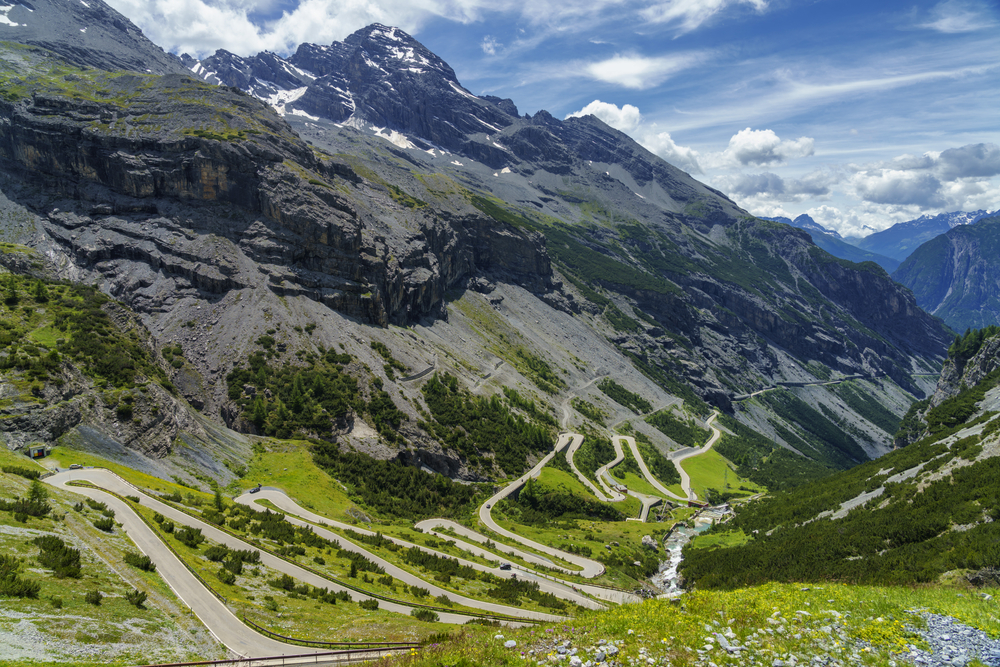
Now we switch gears to navigate the dizzying heights of Stelvio Pass, known in Italian as “Passo dello Stelvio”. Towering at 2,757 meters above sea level, it’s one of the highest mountain passes in Europe and offers about 48 hairpin turns in just 24 kilometers. Brace yourself for an adrenaline-fueled journey with stunning Alpine views!
The Route: The drive begins at Bormio, winds its way up through a series of hair-raising hairpin bends, and ends at the Stelvio National Park.
- Bormio: Start in Bormio, a town famous for its thermal baths. Hidden Secret: Be sure to check out Bagni Vecchi, ancient Roman baths situated atop a hill with fantastic views of the valley below.
- Stelvio Pass: Driving up this pass, you’ll be treated to unparalleled views of the surrounding snow-capped mountains. Hidden Secret: Spot the stone markers along the way that count down the hairpin bends to keep you entertained!
- Stelvio National Park: Once you’re at the top, enjoy a range of activities at the national park, from hiking to skiing. Hidden Secret: Look out for wildlife like ibex and marmots that call this park home.
Local Cuisine: Enjoy hearty mountain fare like ‘Pizzoccheri’, a type of buckwheat pasta special to this region. Hidden Secret: Try the lesser-known ‘Sciatt’, delicious cheese-filled buckwheat fritters, at a mountain hut or ‘rifugio’.
Offbeat Attraction: Not for the faint-hearted, the Tibetan bridge ‘Ponte Tibetano’ in Sondrio is a thrill worth adding to your bucket list.
Best Time to Travel: The road is usually only open from late May to November, due to heavy snowfall during winter.
Driving Tips: Take it slow and steady. The roads are narrow and the curves sharp, requiring your full attention.
Parking: There are parking areas available at the top of the Stelvio Pass.
Sustainable Travel Tip: Consider carpooling up the pass to reduce carbon emissions.
Stay: For a unique experience, stay at a local ‘rifugio’ or mountain hut, such as the rustic Rifugio Garibaldi.
Nearby Excursion: Detour to the charming town of Glorenza, one of the smallest cities in the world, encased within medieval walls.
Italian Phrase for the Journey: “Chi va piano, va sano e va lontano” – He who goes softly, goes safely and goes far. Perfect advice for tackling the hairpin turns of Stelvio Pass.
Emergency Contacts: Remember, dial 112 for emergencies. Also, have numbers for roadside assistance handy.
Forth Scenic Route: The Great Dolomite Road
Let’s now journey through Italy’s awe-inspiring northern region, to conquer the Great Dolomite Road. Spanning approximately 110 kilometers, this drive takes us through the heart of the Dolomites mountain range, from Bolzano in the west to Cortina d’Ampezzo in the east.
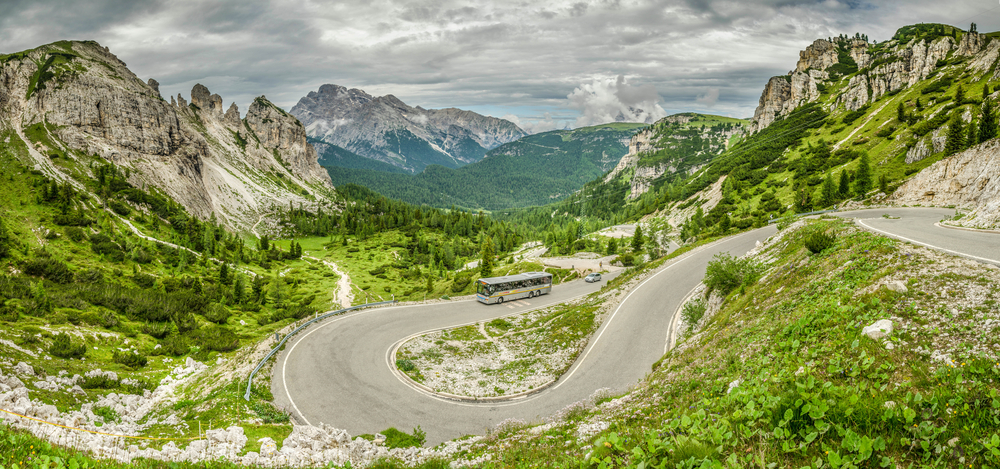
The Route: Start in the historic city of Bolzano, travel through the picturesque valleys of Val di Fassa and Val di Fiemme, and finish in the glamorous alpine resort town of Cortina d’Ampezzo.
- Bolzano: Your trip begins in Bolzano, an intriguing blend of Italian and Austrian cultures. Hidden Secret: Visit the South Tyrol Museum of Archaeology to meet Ötzi the Iceman, a well-preserved natural mummy of a man who lived around 3300 BCE!
- Val di Fassa & Val di Fiemme: These stunning valleys offer plenty of hiking and skiing opportunities. Hidden Secret: For a unique experience, visit the Predazzo Geological Museum in Val di Fiemme, which hosts one of the most comprehensive collections of Dolomite rocks and minerals.
- Cortina d’Ampezzo: The journey concludes in Cortina, known for its ski resorts and high-end shopping. Hidden Secret: Take the cable car up to Ra Valles, a lesser-known but just as impressive viewpoint.
Local Cuisine: Try Canederli (bread dumplings) and Speck (smoked ham), local favorites of the South Tyrol region. Hidden Secret: Sample Schlutzkrapfen, a type of ravioli, at a local eatery.
Offbeat Attraction: Check out the ‘Earth Pyramids’ in Renon, tall and slender towers of clay formed by erosion.
Best Time to Travel: The route is most scenic from June to September, when the weather is clear.
Driving Tips: Be prepared for mountain driving with sharp turns and switchbacks. Carry snow chains in winter.
Parking: Parking areas are available in towns along the way, often marked with a blue ‘P’ sign.
Sustainable Travel Tip: Limit your environmental impact by using marked parking spots and staying on designated roads.
Stay: Experience Alpine luxury at the Cristallo, a Luxury Collection Resort & Spa in Cortina d’Ampezzo.
Nearby Excursion: Take a detour to visit the magnificent Lake Carezza, known for its rainbow-colored waters.
Italian Phrase for the Journey: “Montagna, mi fai sentire vivo” – Mountain, you make me feel alive. This phrase perfectly captures the invigorating experience of a Dolomites adventure.
Emergency Contacts: Dial 112 for any emergencies and keep local hospital contacts for each city or town.
Fifth Scenic Route: The Idyllic Val d’Orcia
It’s time to let your heart and wheels roll through the picture-perfect landscapes of Val d’Orcia. This UNESCO World Heritage site offers a postcard-pretty journey across rolling hills, vineyards, and charming medieval towns.
The Route: This dreamy drive takes us from Pienza through San Quirico d’Orcia, and finally to the iconic town of Montalcino.
- Pienza: Kick off your journey in Pienza, known as the ‘ideal city of the Renaissance’. Hidden Secret: Take a leisurely stroll through the lesser-known ‘Parco Artistico Naturale e Culturale della Val d’Orcia’ for a unique artistic and natural experience.
- San Quirico d’Orcia: A small town brimming with historical and architectural gems. Hidden Secret: Visit the Horti Leonini, a public park that’s a perfect example of Italian Renaissance garden design, but often missed by tourists.
- Montalcino: Renowned for its Brunello di Montalcino wine. Hidden Secret: Take a tour of the ‘Fortezza di Montalcino’, a beautifully preserved fortress offering stunning views of the Tuscan countryside.
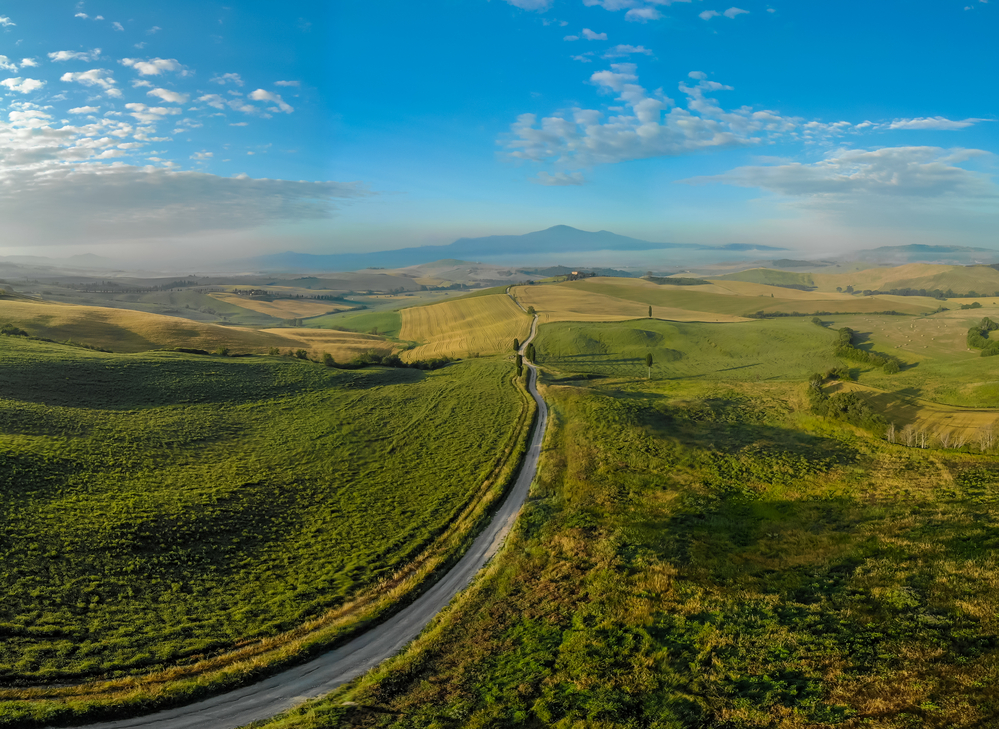
Local Cuisine: Indulge in Pecorino cheese in Pienza and savor the renowned Brunello di Montalcino wine. Hidden Secret: Try ‘pici’, a thick, hand-rolled pasta, at a local trattoria.
Offbeat Attraction: The Chapel of Vitaleta, one of the most photographed spots in Tuscany yet it remains off the beaten track for many travelers.
Best Time to Travel: Spring (April to June) or Autumn (September and October) when the countryside is at its most beautiful.
Driving Tips: Roads are well-maintained but winding. Always keep to the right except when overtaking.
Parking: Follow the blue signs with a white ‘P’ to designated parking areas in each town.
Sustainable Travel Tip: Stick to marked trails when exploring the countryside to protect the local flora and fauna.
Stay: For a luxurious rural retreat, consider staying at the Castello di Velona Resort in Montalcino.
Nearby Excursion: Detour to the peaceful Bagno Vignoni, known for its hot springs.
Italian Phrase for the Journey: “La vita è bella” – Life is beautiful. A phrase that sums up the essence of a Val d’Orcia road trip.
Emergency Contacts: Dial 112 for emergencies, and make a note of the nearest hospitals in Pienza and Montalcino.
Sixth Scenic Route: The Enigmatic Etruscan Coast
Steering off the beaten path, we head towards the mesmerizing Etruscan Coast. This lesser-known route winds along the Tyrrhenian Sea, taking us from the vibrant Livorno to the picturesque Piombino, all the while revealing hints of Italy’s ancient Etruscan civilization.
The Route: We embark on a journey from Livorno, exploring coastal gems like Castiglioncello, San Vincenzo, and finally docking at Piombino.
- Livorno: A bustling port city with a rich culinary scene. Hidden Secret: Venture into the ‘La Venezia’ neighborhood, a Venice-like quarter full of canals that many tourists overlook.
- Castiglioncello: A charming seaside town with stunning cliffs and beautiful coves. Hidden Secret: Discover the secluded ‘Baia del Quercetano’, a small beach ensconced between two cliffs.
- San Vincenzo: Known for its long sandy beaches and clear blue waters. Hidden Secret: Visit the nearby ‘Parco di Rimigliano’, a natural park offering a serene escape from the usual beach crowd.
- Piombino: A historic city offering captivating views of the Elba Island. Hidden Secret: Explore the ‘Piazza Bovio’ for its unmatched sunset views.
Local Cuisine: Delight in the ‘Cacciucco’, a local fish stew of Livorno. Hidden Secret: Enjoy ‘Torta di Ceci’, a chickpea pancake that’s a popular street food in the region.
Offbeat Attraction: Visit the Etruscan Archaeological Park of Baratti and Populonia, where you can explore ancient tombs and ruins.
Best Time to Travel: May to September for the best beach weather.
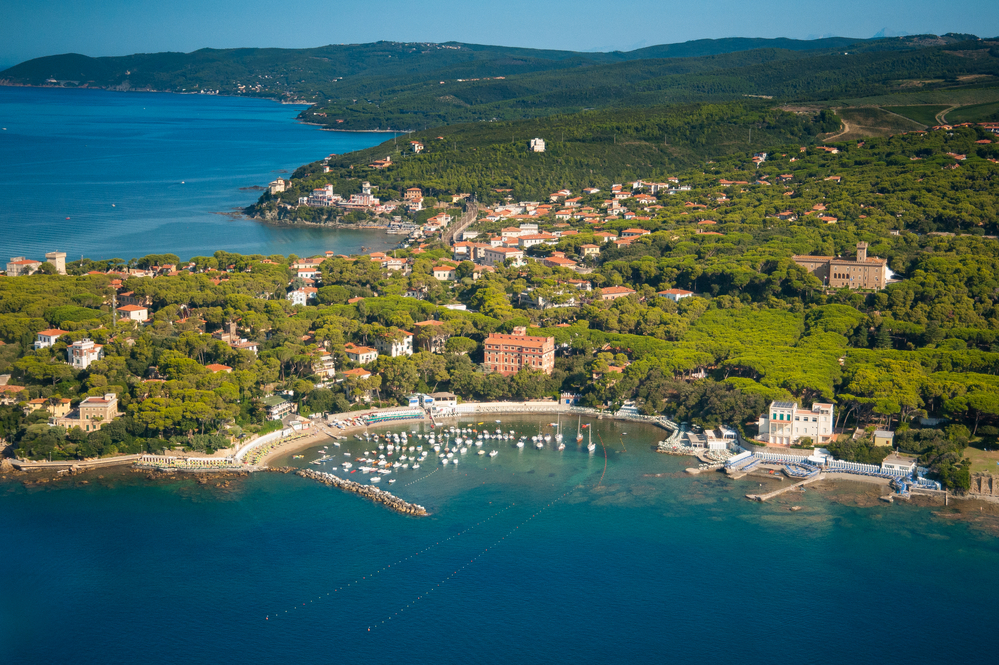
Driving Tips: The route is relatively straightforward with good signage. Be prepared for some traffic during peak tourist season.
Parking: Free parking is available in most towns, but it fills up quickly in summer. Look for the blue ‘P’ sign.
Sustainable Travel Tip: Respect marine life by not disturbing or removing shells or sea creatures from the beaches.
Stay: Experience Tuscan charm at the Hotel Villa Margherita in San Vincenzo.
Nearby Excursion: Consider a day trip to Elba Island, just a short ferry ride away from Piombino.
Italian Phrase for the Journey: “Il mare è senza strade, il mare è senza spiegazioni” – The sea is without roads, the sea is without explanations. A fitting phrase for your coastal escapade.
Emergency Contacts: As always, dial 112 for emergencies and keep the contacts of nearby hospitals in your phone.
Italian Phrases for Your Road Trip
Ready to hit the road, Italian-style? Well, strap on your seatbelt and let’s learn some key Italian phrases to make your journey smoother and more enjoyable. Here are some phrases, complete with their English meanings and phonetic transcriptions:
- “Dove posso parcheggiare?” – Where can I park? (Phonetically: Doh-veh pos-soh par-ke-ggiar-eh?)
- “Posso avere una mappa?” – May I have a map? (Phonetically: Pos-soh a-ve-re una map-pa?)
- “Quanto dista?” – How far is it? (Phonetically: Quan-toh dis-ta?)
- “Qual è la strada per…?” – What’s the road to…? (Phonetically: Qual eh la stra-da per…?)
- “Dov’è la stazione di servizio più vicina?” – Where is the nearest gas station? (Phonetically: Dov eh la sta-tsi-one di ser-vi-tsi-o più vi-chi-na?)
- “Siamo persi. Potresti aiutarci?” – We’re lost. Could you help us? (Phonetically: Sia-moh per-si. Po-tres-ti aiu-tar-ci?)
- “C’è un’area di sosta nelle vicinanze?” – Is there a rest area nearby? (Phonetically: Che un-area di sost-a nelle vi-ci-nan-ze?)
- “Vorrei noleggiare un’auto.” – I would like to rent a car. (Phonetically: Vor-rei no-leg-giare un-auto.)
- “Ho bisogno di un’assicurazione auto.” – I need car insurance. (Phonetically: Ho bisog-no di un-assi-cura-zione auto.)
- “Quale autostrada dovrei prendere per…?” – Which highway should I take for…? (Phonetically: Quale auto-strada dovrei pren-dere per…?)
And here are some extra ones for good measure:
- “È una strada a pedaggio?” – Is it a toll road? (Phonetically: Eh una stra-da a pe-dag-gio?)
- “Dov’è l’uscita per…?” – Where is the exit for…? (Phonetically: Dov eh l’us-ci-ta per…?)
- “Siamo quasi arrivati?” – Are we almost there? (Phonetically: Sia-moh quasi arri-vati?)
Remember, a little Italian can go a long way! So, practice these phrases, and you’ll be ready to conquer the Italian roads with confidence. Buon viaggio! (Have a good trip!)
(Note: The phonetic transcriptions provided are approximate, as regional accents and nuances can vary.)
Seventh Scenic Route: The Timeless Lake Como
Buckle up as we navigate through the enchanting landscapes of Lake Como. Notorious for its magnificent villas and Alpine scenery, this drive around Italy’s third-largest lake is an affair to remember.
The Route: Begin in Como, then visit the picturesque towns of Bellagio and Varenna, and finally make your way to Lecco.
- Como: The city is known for its Gothic Como Cathedral and the funicular to Brunate. Hidden Secret: Visit the little-known Museo Didattico della Seta, an educational museum dedicated to Como’s silk production.
- Bellagio: Known as the ‘Pearl of Lake Como’, Bellagio’s steep stone lanes are worth exploring. Hidden Secret: Take the path less traveled to Pescallo, a charming fishing village just a walk away from the crowded city center.
- Varenna: With colorful buildings and a quiet lakeside promenade, it’s perfect for a leisurely stroll. Hidden Secret: Escape the crowd and visit the scenic Orrido di Bellano, a nearby gorge with rushing waterfalls.
- Lecco: End your journey in Lecco, a city rich in literary history. Hidden Secret: Few tourists venture to the nearby wildlife-rich Piani d’Erna, a plateau with stunning views.
Local Cuisine: Try Risotto con Pesce Persico (Perch Risotto), a local favorite around Lake Como. Hidden Secret: Don’t miss out on ‘Cutizza’, a sweet bread available in local bakeries.
Offbeat Attraction: The secluded Nesso, a small village with a ravine that’s been carved over centuries by a tumbling stream.
Best Time to Travel: March to November, when most attractions are open and the weather is pleasant.
Driving Tips: The lakeside roads are narrow with sharp turns, so drive carefully. Avoid driving in the busy midday hours.
Parking: There are metered parking spaces in towns. Follow the blue sign with the white ‘P’.
Sustainable Travel Tip: Respect the serenity of the lake and avoid littering.
Stay: For an indulgent stay, consider the Grand Hotel Tremezzo, which offers stunning lake views.
Nearby Excursion: Hop onto a ferry to visit the lake’s islands, Isola Comacina.
Italian Phrase for the Journey: “Non tutto quello che brilla è oro, tranne il tramonto sul lago” – Not all that glitters is gold, except the sunset on the lake. This phrase encapsulates the magical allure of Lake Como.
Emergency Contacts: Dial 112 for emergencies. Keep handy the contacts of nearby hospitals.
Almost There: Keep those wheels turning, we’re headed towards our final scenic routes!
Eighth Scenic Route: The Remarkable Romagna Riviera
Get ready to bask in the sunny allure of Italy’s longest coastline, the Romagna Riviera. Stretching from the lively Rimini to the tranquil Comacchio, this route offers a delightful medley of bustling beaches, charming villages, and historical treasures.
The Route: We start our journey at Rimini, head north through Cesenatico and Ravenna, and finally cruise into Comacchio.
- Rimini: A hotspot for beach lovers and history enthusiasts alike. Hidden Secret: Wander off to the quaint Borgo San Giuliano neighborhood, often missed by beachgoers.
- Cesenatico: Known for its charming canal and maritime museum. Hidden Secret: Take a peaceful bike ride along the lesser-known Parco del Levante, a nature reserve with cycling paths.
- Ravenna: Famous for its stunning Byzantine mosaics. Hidden Secret: Visit Dante’s tomb and the lesser-known Quadrarco di Braccioforte, a mysterious monument associated with the poet.
- Comacchio: Known as ‘Little Venice’ due to its canals and bridges. Hidden Secret: Take a boat tour of the Valli di Comacchio, a group of lagoons off the usual tourist trail.
Local Cuisine: Delight in a Piadina, a thin Italian flatbread typical of the Romagna region. Hidden Secret: Try Sardoncini sotto Scapece, a lesser-known local dish made with marinated sardines.
Offbeat Attraction: The Casa Romei in Ferrara, a well-preserved medieval residence, often overlooked by tourists.
Best Time to Travel: May to September for beach weather. For fewer crowds, opt for May, June, or September.
Driving Tips: The coastal roads are straightforward and well-marked. Watch out for cyclists!
Parking: Follow the blue signs with a white ‘P’ to designated parking areas in each town.
Sustainable Travel Tip: When visiting beaches, make sure you don’t leave any trash behind.
Stay: Hotel Universal in Cervia offers eco-friendly accommodations right on the beach.
Nearby Excursion: Make a detour inland to the Republic of San Marino, a microstate located within Italy.
Italian Phrase for the Journey: “Dolce far niente” – It’s sweet to do nothing. Perfectly captures the relaxing vibe of the Riviera.
Emergency Contacts: Dial 112 for emergencies and keep contacts of nearby hospitals handy.
Final Leg: Only two more jaw-dropping routes to explore. Are you ready?
Ninth Scenic Route: The Irresistible Italian Riviera
Our next route takes us to the dazzling Ligurian coast, famously known as the Italian Riviera. We’ll cruise through candy-colored towns, vibrant harbors, and tranquil beaches from Genoa to Ventimiglia.
The Route: We begin our journey in Genoa, travel through Portofino and Cinque Terre, and conclude in Ventimiglia.
- Genoa: The bustling city is famed for its monumental architecture and rich maritime history. Hidden Secret: Visit the Rolli Palaces, a series of aristocratic residences that often go unnoticed by tourists.
- Portofino: Known for its picturesque harbor and upscale boutiques. Hidden Secret: Hike up to the less-visited Castello Brown for splendid views over the bay.
- Cinque Terre: A string of five colorful seaside villages perched on rugged cliffs. Hidden Secret: Visit the remote village of Corniglia, the only one of the five not directly adjacent to the sea.
- Ventimiglia: Marking the end of the Italian Riviera and the start of the French Riviera. Hidden Secret: Discover the unspoiled Hanbury Gardens, located just outside town.
Local Cuisine: Savour Focaccia di Recco, a local variant of the famous Ligurian bread. Hidden Secret: Try Panera, a less-known dessert made with coffee and cream.
Offbeat Attraction: The ghost town of Balestrino, abandoned due to geological instability.
Best Time to Travel: April to June and September to October for the best weather and fewer tourists.
Driving Tips: Coastal roads can be narrow and winding. Always stick to the speed limits.
Parking: Designated parking areas can be found in towns, but it’s advised to check parking rules, as some areas are restricted.
Sustainable Travel Tip: Support local businesses by shopping from traditional artisans.
Stay: Belmond Hotel Splendido in Portofino offers a luxurious experience with an eco-conscious approach.
Nearby Excursion: Visit the quaint city of Albenga, known for its well-preserved medieval center.
Italian Phrase for the Journey: “A ogni uccello il suo nido è bello” – To every bird, his own nest is beautiful. A nod to the simple joys of exploring new places.
Emergency Contacts: Dial 112 for emergencies. Be sure to save contacts of nearby hospitals.
The Home Stretch: Hold onto your hats, folks. We’re onto our final scenic route.
Tenth Scenic Route: The Legendary Mille Miglia Route
How can we discuss Italian road trips without mentioning the iconic Mille Miglia Route? Mille Miglia, translating to a “thousand miles”, was a historic endurance race that ran from 1927 to 1957. Today, it’s relived as a regularity race for classic and vintage cars, following a similar path from Brescia to Rome and back.
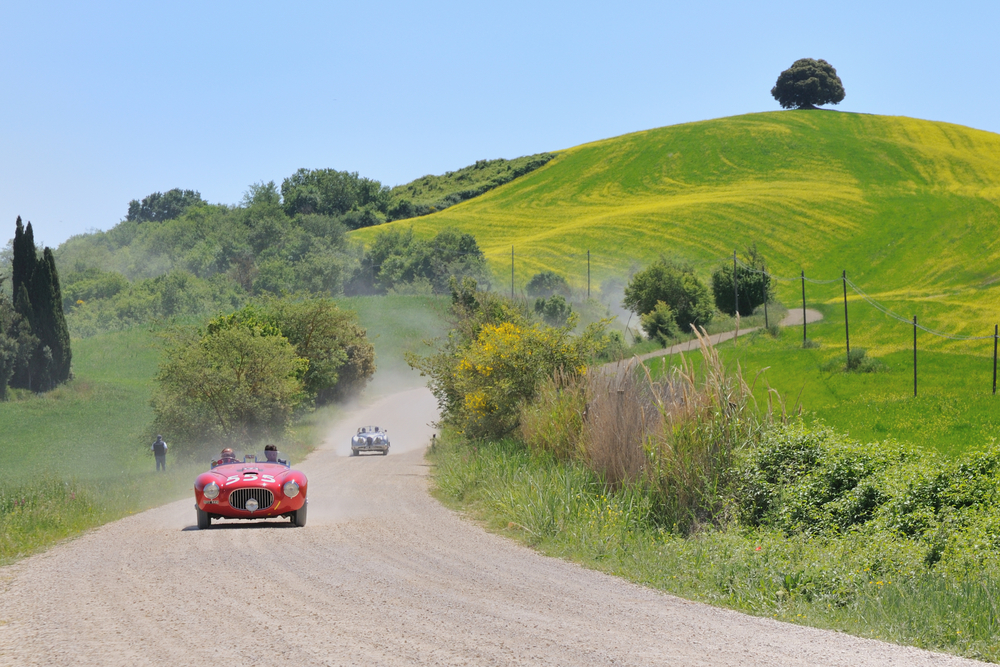
The Route: We begin in Brescia, pass through Parma, Florence, and finally reach Rome before heading back to Brescia.
- Brescia: A vibrant city known for its rich history and art scene. Hidden Secret: Discover the city’s ancient roots at the less-visited Brixia: Parco archeologico di Brescia Romana.
- Parma: Famous for its prosciutto and Parmesan cheese. Hidden Secret: Sneak a visit to the tranquil Parco Ducale, a green oasis often missed by tourists.
- Florence: The heart of the Renaissance, with countless museums and galleries. Hidden Secret: Try to find the hidden bakeries serving up fresh pastries in the early hours of the morning.
- Rome: The Eternal City, where ancient history and contemporary life mingle seamlessly. Hidden Secret: Visit the non-touristy neighborhood of Testaccio, home to authentic Roman cuisine and culture.
Local Cuisine: Indulge in a Panino al Lampredotto, a typical Florentine street food. Hidden Secret: Savor a Coda alla Vaccinara, a less-known Roman oxtail stew.
Offbeat Attraction: The Antica Corte Pallavicina, near Parma, an ancient court that now houses a renowned restaurant and culatello cellar.
Best Time to Travel: May during the Mille Miglia car race, but spring and fall in general provide pleasant weather and fewer tourists.
Driving Tips: The route follows several types of roads, including city streets, country roads, and highways. Stay alert and adaptable.
Parking: Follow local signage for parking, keeping in mind that historic city centers often have restricted access.
Sustainable Travel Tip: Try to balance your carbon footprint by choosing eco-friendly accommodations and dining options.
Stay: The Grand Hotel et de Milan in Milan offers a vintage stay steeped in history.
Nearby Excursion: Take a side trip to the enchanting Lake Garda, Italy’s largest lake.
Italian Phrase for the Journey: “Chi va piano, va sano e va lontano” – He who goes softly, goes safely and goes far. Wise words for our Mille Miglia adventurers.
Emergency Contacts: Dial 112 for emergencies. Keep contacts of local hospitals handy.
Special Mention: The Spectacular Western Sicily Route
The western part of Sicily offers a blend of nature, history, and stunning seaside views. For a memorable road trip, take the Western Sicily Route.
The Route: We’ll start from Palermo, journey through Trapani, marvel at Marsala, visit the temple-laden Agrigento, and finally unwind in Sciacca.
- Palermo: The vibrant Sicilian capital, known for its grand squares and lively markets. Hidden Secret: Explore the Capuchin Catacombs, an eerie but fascinating underground world.
- Trapani: A historic fishing port with a stunning medieval old town. Hidden Secret: Take a cable car to Erice, a medieval village perched atop a mountain with panoramic views of the sea and city.
- Marsala: Famous for its fortified wine and beautiful Baroque architecture. Hidden Secret: Visit the lesser-known Mozia Island, a Phoenician archaeological site off the coast.
- Agrigento: Renowned for the Valley of the Temples, a UNESCO World Heritage Site. Hidden Secret: Stroll through the Kolymbetra Garden, a lush hidden gem nestled in the Valley.
- Sciacca: A picturesque port town known for its thermal baths. Hidden Secret: Check out the Enchanted Castle, a garden adorned with unique sculptures crafted by a local artist.
Local Cuisine: Relish a plate of fresh Seafood Couscous, a local specialty. Hidden Secret: Try Pani câ meusa, a traditional Palermitan sandwich.
Offbeat Attraction: The salt pans between Trapani and Marsala, where you can witness salt harvesting and stunning sunsets.
Best Time to Travel: Spring (April-June) or Fall (September-November) for pleasant weather and lesser crowds.
Driving Tips: Sicilian roads can be narrow and winding, especially in hilly regions. Stay cautious and take your time.
Parking: Most towns have designated parking areas outside the historic centers. Always follow local signage.
Sustainable Travel Tip: Support local artisans and businesses by shopping local produce and handcrafted souvenirs.
Stay: Baglio Oneto Resort and Wines, Marsala offers a historic stay amidst vineyards.
Nearby Excursion: The Zingaro Nature Reserve, a beautiful coastal nature reserve perfect for hiking and swimming.
Italian Phrase for the Journey: “L’occhio vuole la sua parte” – The eye wants its part. Indeed, the scenic beauty of this route will be a feast for your eyes.
Emergency Contacts: Dial 112 for emergencies. Keep contacts of local hospitals handy.
Bonus Scenic Route: The Targa Florio Classic Route, Sicily
Another historic Italian road race route that offers thrilling landscapes and a taste of racing history is the Targa Florio Route in Sicily. The Targa Florio was an open road endurance automobile race held in the mountains of Sicily. Today, it’s relived through the Targa Florio Classic, a regularity race for classic cars.
The Route: The classic circuit, known as “Circuito Piccolo delle Madonie”, starts and ends in Cerda, passing through a series of picturesque Sicilian towns like Caltavuturo, Collesano, and Campofelice di Roccella.
- Cerda: This is where it all begins. A quiet village famous for its artichoke festival. Hidden Secret: The lesser-visited but charming Chiesa Madre di San Calogero.
- Caltavuturo: Known for its historical sites and beautiful natural scenery. Hidden Secret: The “Gurfa” Grotto, an intriguing subterranean structure with unclear origins.
- Collesano: A quaint town offering stunning views of the Madonie mountains. Hidden Secret: The little-known Circuit Museum, dedicated to the Targa Florio race.
- Campofelice di Roccella: A coastal town with beautiful beaches. Hidden Secret: The Castle of Roccella, a relatively overlooked 12th-century fortress with panoramic sea views.
Local Cuisine: Try the Sicilian Pesto Trapanese, a local variant of pesto made with tomatoes, almonds, and basil. Hidden Secret: Sample a unique Artichoke Gelato in Cerda, the town’s specialty.
Offbeat Attraction: The Himera Archaeological Site, near Campofelice di Roccella, home to the ruins of an ancient Greek city.
Best Time to Travel: April-May during the Targa Florio Classic, but spring (April-June) and fall (September-November) offer comfortable weather and fewer tourists.
Driving Tips: The route consists of narrow, winding mountain roads that require careful driving.
Parking: Follow local signage for parking. In most towns, there are designated parking areas outside the historical centers.
Sustainable Travel Tip: Opt for local produce and handcrafted souvenirs to support local businesses.
Stay: The Masseria Susafa in Polizzi Generosa offers a rustic stay amidst beautiful Sicilian countryside.
Nearby Excursion: Explore the Madonie Regional Natural Park, a biodiversity hotspot known for its unique flora and fauna.
Italian Phrase for the Journey: “A mali estremi, estremi rimedi” – For extreme ills, extreme remedies. A fun way to say “desperate times call for desperate measures”, which you might find fitting while navigating the challenging Targa Florio route.
Emergency Contacts: Dial 112 for emergencies. Keep contacts of local hospitals handy.
Final Word: Enjoy the adrenaline rush of driving the historic Targa Florio route while soaking in the captivating beauty of Sicily. Until next time, keep exploring and safe travels!
Bonus Scenic Route: The Motor Valley Drive, Emilia-Romagna
For car enthusiasts, the Motor Valley Drive in the Emilia-Romagna region is a must. This is where world-renowned Italian car manufacturers Ferrari, Alfa Romeo, Maserati, and Fiat were born.
The Motor Valley road in Italy isn’t a specific road but more of a region where Italy’s iconic car and motorcycle manufacturers, including Ferrari, Lamborghini, Maserati, and Ducati, are based. It’s primarily located in the Emilia-Romagna region.
The Route: Start from Modena, move towards Maranello, and then explore Turin.
- Modena: Birthplace of Enzo Ferrari. Visit the Enzo Ferrari Museum, showcasing the life and work of the founder and some iconic Ferrari models. Hidden Secret: Try the exquisite traditional balsamic vinegar of Modena in local acetaias.
- Maranello: Home to the Ferrari factory and the Ferrari Museum, offering a deep dive into the brand’s prestigious history. Hidden Secret: The lesser-known but fascinating Righini Collection, a private collection of rare cars and motorcycles.
- Turin: The heart of the Italian auto industry and birthplace of Fiat. The National Automobile Museum here is one of the world’s most famous automobile museums. Hidden Secret: The picturesque Parco del Valentino, which hosts an annual car show.
Local Cuisine: Relish a serving of Tortellini, a local pasta specialty. Hidden Secret: Taste the lesser-known but delightful Erbazzone, a savory pie filled with spinach and Parmigiano Reggiano.
Offbeat Attraction: Visit the Ducati Museum in Bologna, a paradise for motorbike lovers.
Best Time to Travel: May-June when many car festivals and exhibitions take place.
Driving Tips: Motorway driving in Italy can be fast-paced, so stay alert and follow speed limits.
Parking: Use designated parking areas in cities. Street parking is also available, follow the color-coded lines.
Sustainable Travel Tip: Opt for a tour in an eco-friendly electric vehicle to minimize your carbon footprint.
Stay: UNAWAY Hotel Bologna San Lazzaro offers a great balance between city life and peaceful retreat.
Nearby Excursion: Visit the beautiful city of Parma, known for its food and music.
Italian Phrase for the Journey: “Chi va piano, va sano e va lontano” – He who goes softly, goes safely and goes far. Apt for this journey through the birthplaces of speed demons!
Emergency Contacts: Dial 112 for emergencies. Keep contacts of local hospitals handy.
Final Word: Experience the thrill of Italy’s automotive history as you explore the scenic routes of Emilia-Romagna. Safe travels, and remember, it’s not just about the destination, but the journey!
Important Information: Driving in Italy
- Understand the Rules: Familiarize yourself with Italian road rules. Remember that in Italy, we drive on the right-hand side. Seat belts are mandatory, and you mustn’t use your phone while driving unless it’s hands-free.
- Autostrada Etiquettes: Autostradas are Italy’s version of highways. They’re toll roads, so keep some change handy. Stick to the speed limit (130km/h on most autostradas) and remember, slower traffic stays right.
- City Driving and ZTLs: Many Italian cities have zones known as ZTLs (Zona a Traffico Limitato) where access is restricted. Unauthorized vehicles entering a ZTL will be fined, so watch out for these signs.
- Carry Required Documents: Always carry your driver’s license, passport, vehicle registration, and insurance documents. If you’re from outside the EU, you may need an International Driving Permit (IDP).
- Parking: Blue lines indicate paid parking, white lines indicate free parking, and yellow lines are reserved for special vehicles or loading.
What If An Accident Happens?
In case of an accident, immediately contact the local police and your car rental agency. Make sure to obtain a copy of the police report and note down the details of any other vehicle involved.
Italian Phrase of the Day
“Guida con prudenza!” (Drive safely!)
Conclusion: La Fine del Viaggio (The End of the Journey)
Well, amici (friends), we’ve driven through fields, up mountains, and along coasts, but remember: “Non si vede bene che col cuore. L’essenziale è invisibile agli occhi” (One sees clearly only with the heart. The essential is invisible to the eyes).
It’s not just the sights, but the laughter, the unexpected detours, the gelato breaks, and the beautiful Italian phrases we’ve picked up along the way that make this journey unforgettable.
If you enjoyed this road trip as much as I did, why not join our community of fellow travelers at www.facebook.com/groups/italyplanyourjourney/? Let’s keep sharing stories, tips, and the love for all things Italian!
Now it’s your turn to hit the road. Remember, “Il viaggio è la meta” (The journey is the destination). Ready to embark on your Italian road trip? Safe travels, friends, and arrivederci!

